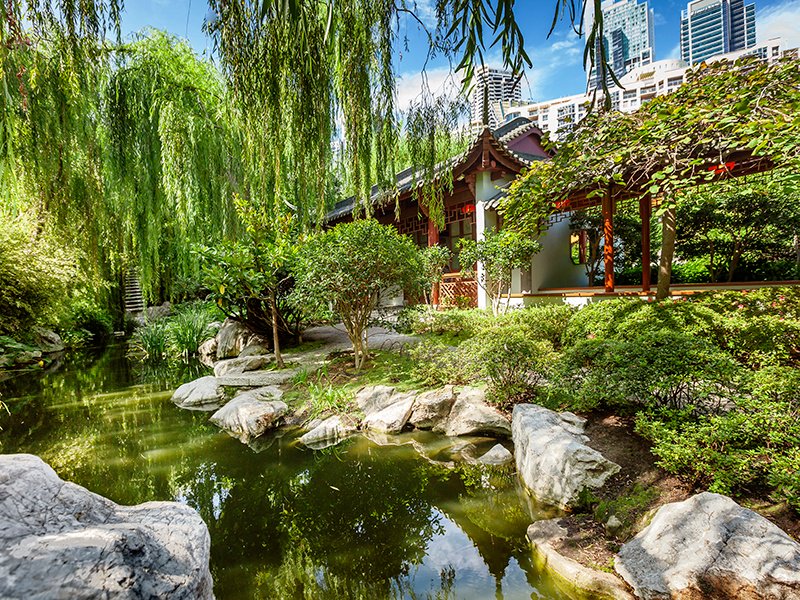How to Design an Asian-Inspired Garden
Gardens with Japanese and Chinese elements offer a peaceful retreat—all it takes is an understanding of ancient design principles and a well-curated selection of plants
Gardens with Japanese and Chinese elements offer a peaceful retreat—all it takes is an understanding of ancient design principles and a well-curated selection of plants
The serene, meditative garden from the East has become increasingly appealing as a private sanctuary for garden lovers everywhere. Asian-style spaces are largely influenced by Buddhist, Shinto, and Taoist philosophies, and as our understanding of these ideologies grows, it’s logical that our fascination with Oriental landscape design should also evolve.

“The enigma of the Japanese garden is a threshold through which we may discover not simply an arrangement of plants and rocks, but a moment of revelation…” notes Sophie Walker, in her book The Japanese Garden (Phaidon). “As I reflect on the Japanese garden and its cultural resonance, I am ever more convinced that garden-making belongs to the highest arts.”
We asked the experts for their advice on how to master this fine art and create the perfect Asian-inspired oasis.
1. Take inspiration from international travel
Global travel, international business, and a greater appreciation of cross-border culture play a part in our appreciation of these Asian exports. “Several of my clients have lived and worked in Asia,” explains Evan Blewett of LandArts, a landscape design firm in Apex, North Carolina. “When they return home, they bring with them an appreciation of Asian design and want to incorporate that into their gardens.”
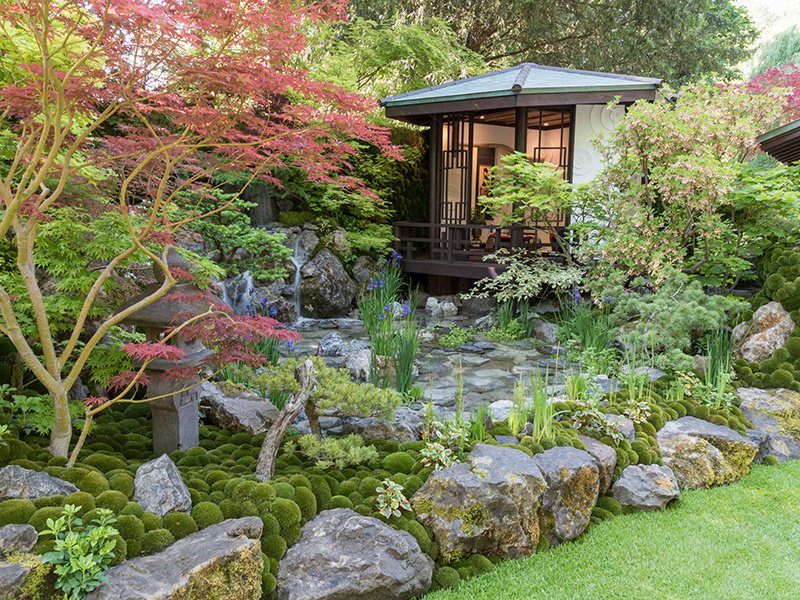
2. Let nature be your guide
“We live in an unusually distracted and increasingly impersonal world,” says Tim Gruner, curator of Anderson Japanese Gardens in Rockford, Illinois. “We are often almost completely disconnected from the ancient rhythms of nature and seasonal rejuvenation that were once an integral part of our lives. A Japanese-style garden can help us re-engage with nature and feel part of something timeless, ancient, and healthy.”

In Chinese gardens, the emphasis is on the convergence of nature and culture, and the driving force is one of harmony and discovery. Japanese gardens, while superficially similar, are more carefully controlled. “The Japanese garden remains committed to its cultural significance and, most importantly, it remains fully fledged in its aspiration to high art,” explains Walker. “Stepping into the Japanese garden is like entering a place of worship… We are expected to follow the path without straying, for it strictly determines what is revealed, and how and when.”
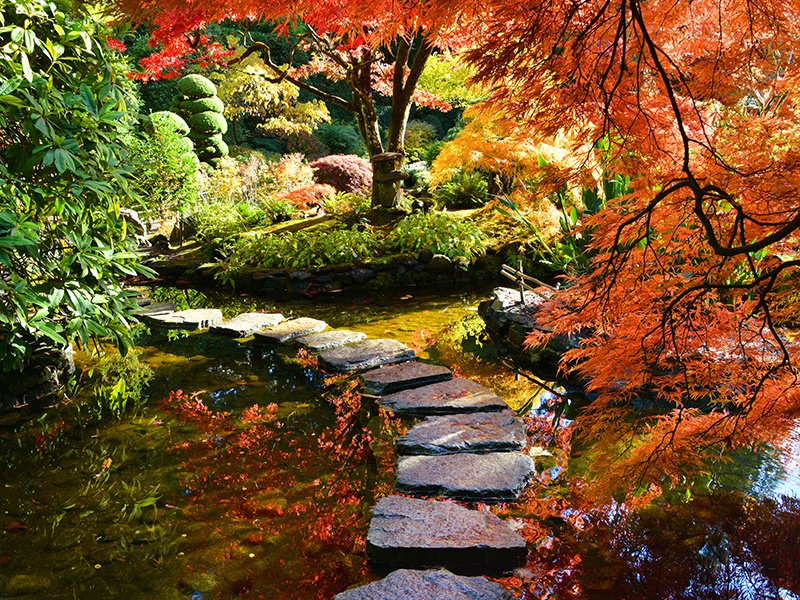
If that sounds a little prescriptive, it is perfectly possible to create the effect of an Asian-style garden without feeling obliged to conquer nature, or control the movements of visiting guests.
A Japanese-style garden can help us re-engage with nature and feel part of something timeless, ancient, and healthy
4. Get creative with water
These precisely designed landscapes can solve some environmental dilemmas, too. Water—arguably the single most important element in both Japanese and Chinese gardens—can be manipulated to conceal unwanted noise from beyond the garden boundaries, and carpets of velvety moss will silently absorb excess moisture, unwanted sound, and harmful airborne pollution.

5. Search for symbolism
Asian-inspired gardens are generally asymmetrical, and most are inherently high maintenance because their appeal is based on perfection and simplicity. In Japanese gardens, evergreen trees, which are said to represent age, are sculpted into ancient-looking specimens using a technique called “cloud-pruning” (or niwaki), while stones and rocks are carefully placed to represent strength, purity, and permanence.
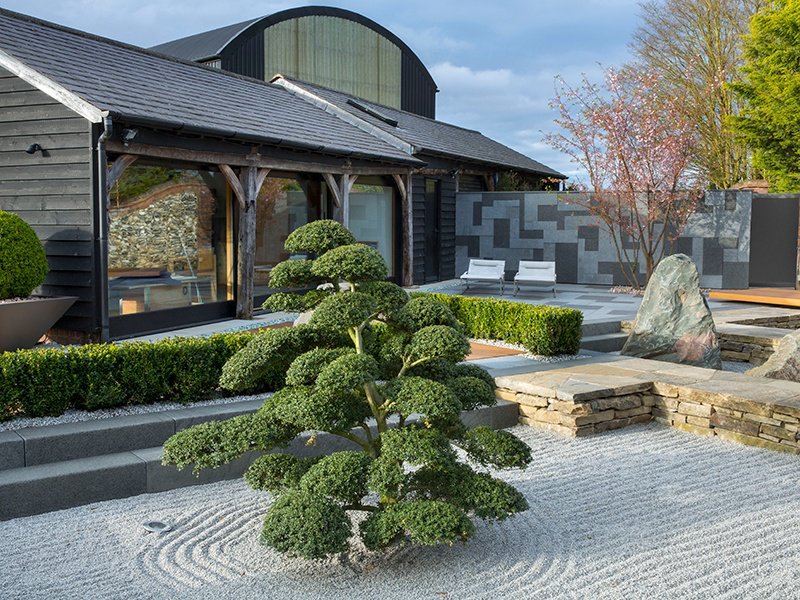
Much is also made of the process of transition: in Chinese gardens, a circular moon gate (or yuèmén) will often be positioned at the threshold of a garden or to divide two separate spaces, while small stone bridges are employed in the Japanese garden to provide a “path of salvation,” enabling you to pass safely from one world to another. The Japanese “dry” garden—or karesansui—is perhaps the most labor-intensive of all, involving exquisitely raked gravel patterns representing the ocean, with little more than a single tree or a mighty rock for adornment.
Stepping into the Japanese garden is like entering a place of worship…
6. Keep it simple
The idea of creating such a refined space successfully can be intimidating, but Gruner has some wise words. “What we call a Japanese-style garden is more about patterns of nature and the associated human connection, than cultural icons,” he explains. “When creating a garden, don’t focus too much on its ‘Japanese-ness.’ Stay away from the torii gates, too much statuary, and big temple bells. Instead, focus on a space that creates a sense of connection with nature.”

7. Pick the perfect plants
Willow, black, or Swiss mountain pine (Pinus nigra or Pinus mugo) and Japanese maples (Acer palmatum) are appropriate trees to use in a Japanese garden but, as Gruner advises, with considerations: “There is no need for variegated foliage, and only a very few weeping plants—typically at major focal points,” he explains. “Red-leaved plants, such as Japanese maples, should also be used sparingly. The garden should appear to be the result of a natural process that reflects a functioning ecosystem.”
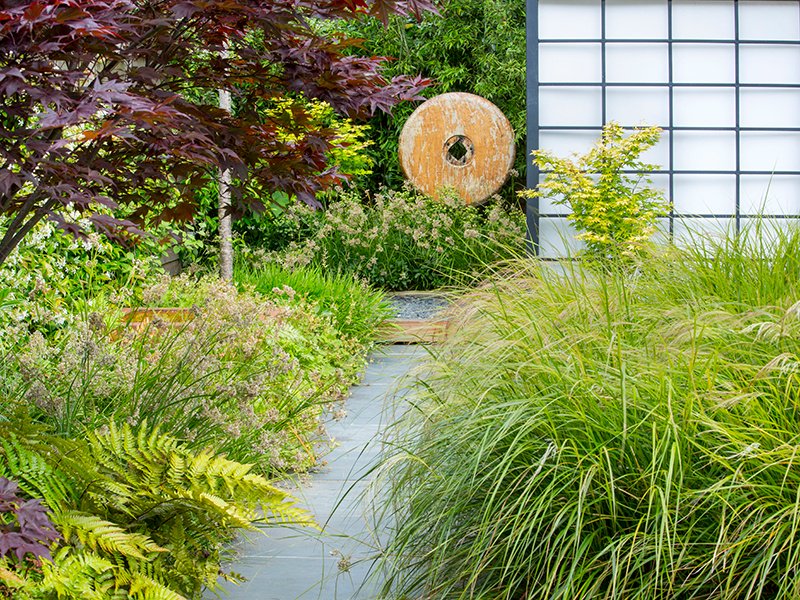
Peach (for longevity) and plum trees (a symbol of rebirth) are widely used in Chinese gardens, and bamboo, a symbol of endurance, is useful for screening or framing a view. Hostas, particularly those with blue leaves, can be planted around water to emphasize its coolness. Seasonal color in a Japanese garden comes from azalea, camellia, flag iris, and peony; Blewett also suggests juniper, creeping fig (Ficus pumila), and fountain grass (Pennisetum orientale). For inspiration, there is a superb glossary of Japanese plants in Walker’s book, The Japanese Garden.
A Japanese-style garden can be constructed anywhere on the planet.
8. Add architectural elements
Architecture is another important component in a Japanese garden. “Gates, bridges, arbors, teahouses—and, of course, the residence itself—are integrated with the landscape to create a seamless transition between the two,” says Gruner.

Perhaps the final question is one of location: can an Asian-style garden really sit comfortably in a continent many miles away? Blewett believes so: “Arts and Crafts-style architecture is a natural fit, and a minimalist Zen-style garden can work well against a modern home.”
